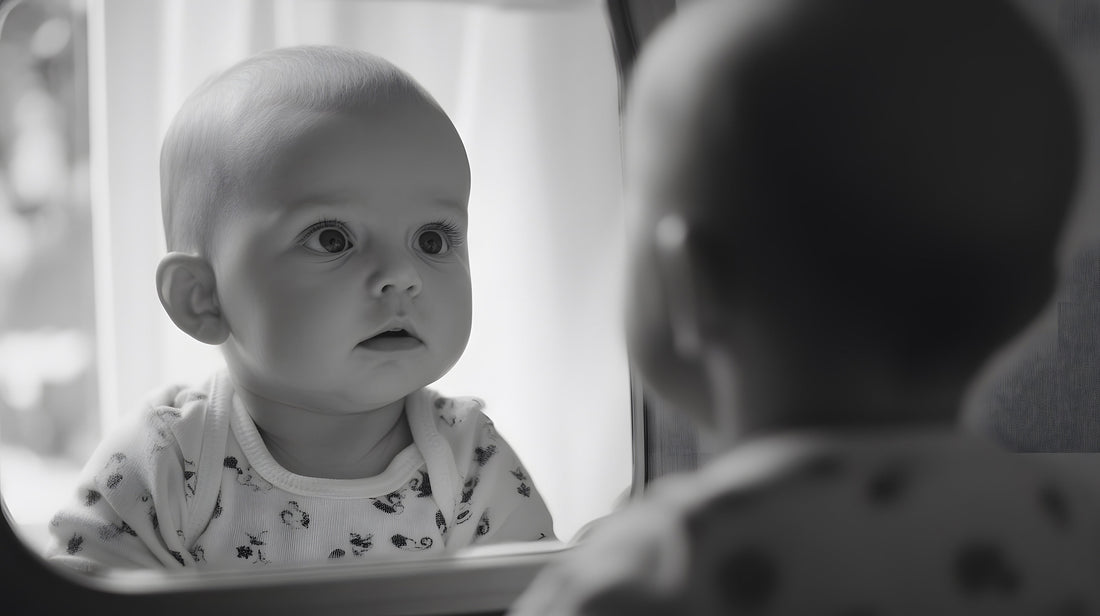
Why Babies Love Mirrors & What They Learn From Them
Share
Mirror, Mirror on the Wall…
Have you ever noticed how your baby lights up when they catch a glimpse of themselves in the mirror? The giggles, the wide-eyed stares, the little hand smudges — it’s all part of the magic. Babies are naturally drawn to mirrors, and it turns out there’s some pretty amazing science behind it.

The Fascination Starts Early
Most babies show interest in mirrors as young as 2–3 months old. At first, they don’t realize the reflection is them — they just see a fascinating, moving face. It’s like having a brand-new friend who’s always smiling back!
By around 18 months, many babies begin to understand that the face in the mirror is their own. That “aha!” moment is a big step in their self-awareness and development.
Why Mirrors Are So Good for Babies
Mirrors aren’t just fun — they’re developmental powerhouses:
Visual stimulation: Babies love faces, and mirrors double the fun.
Social learning: They mimic smiles, waves, and silly faces, building early social skills.
Motor skills: Reaching, patting, and leaning toward the mirror helps coordination.
Self-recognition: Eventually, babies realize “That’s me!” — a milestone in emotional growth.

Playtime Ideas With Mirrors
Here are some simple ways to use mirrors in your daily routine:
Silly Faces: Make funny expressions together — babies love to copy.
Peek-a-Boo: Pop in and out of the mirror’s view for endless giggles.
Name Game: Point to their nose, ears, and mouth in the reflection as you say the words.
Dance Party: Hold your baby and groove in front of a mirror — instant joy!
The Nibble Frame Bonus
That’s one reason we added a baby-safe mirror to the Dadoots Nibble Frame. It’s more than just a teether — it gives babies comfort for sore gums and the joy of seeing their favorite little face staring back. Because teething can be tough, but play and discovery make it a whole lot brighter.

Quick Takeaways for Parents
Babies are drawn to mirrors as early as 2–3 months.
By 18 months, many begin to recognize themselves.
Mirror play boosts visual, social, and motor development.
Add mirrors to playtime for fun and learning rolled into one.
Wrapping It Up
So the next time your little one smears drool on the mirror, don’t worry — it’s more than just a mess. It’s learning, growing, and developing in action. And who can resist watching a baby fall in love with their own reflection?
